My first Muay Thai session ever was in Thailand back in 2017. And I’ve trained ever since. Including more than 1 year in Thailand at several gyms on different trips.
My first class ever was followed by months of training. This gave me a lot of experience in training in Thailand as a beginner. And I’m gonna share with you everything I know – including things I wish I knew when I started.
So whether you’re curious about training yourself, or you’re just about to have your first class. This guide will provide you with everything you need. Not too much – or too little.
📖 Table of Contents
What Is Muay Thai?
Also known as “Thai boxing” or the “art of eight limbs” is an ancient Thai martial art and the national sport of Thailand.
If were to compare it with Western boxing, the main difference is that you’re not only limited to throwing punches. Kicks, knees, elbows, clinching, and sweeping your opponent are also allowed.
This makes it very different. And much more effective seen from an overall martial art perspective.
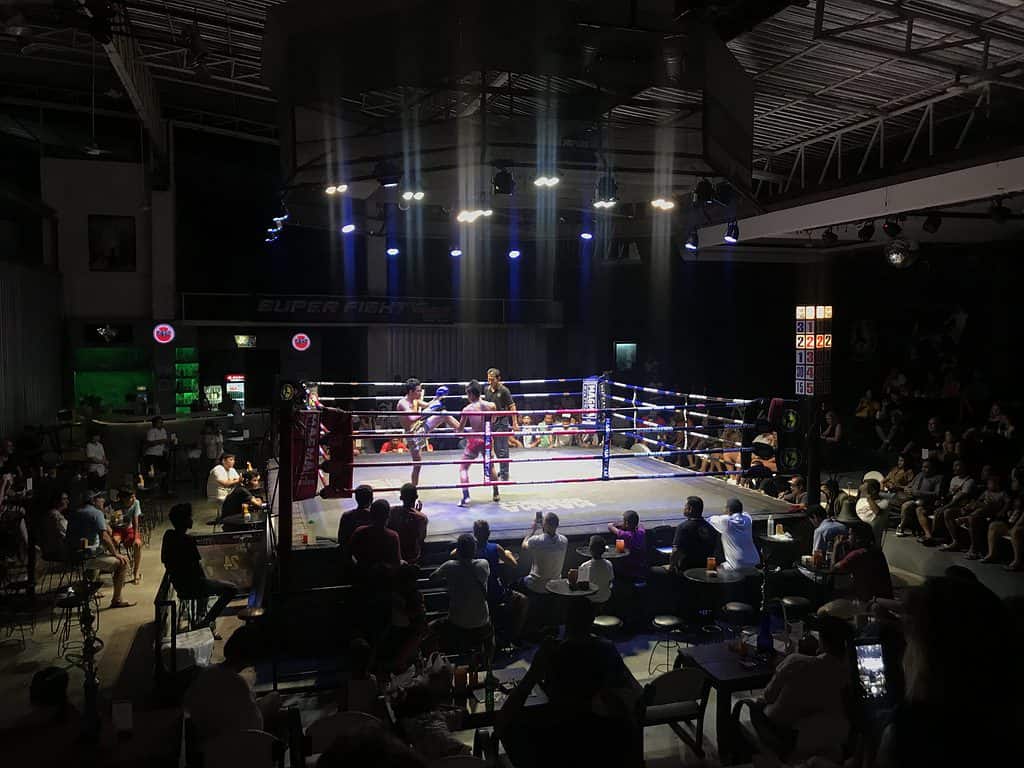
Many tourists also consider Muay Thai an essential experience when visiting Thailand (whether it’s watching or training).
It’s everywhere. And you shouldn’t be surprised if your kind taxi driver at the airport even had a few Muay Thai fights on his resume (talking from experience).
9 Reasons Why You Don’t Want to Miss It
- It’s a different and rich (cultural) experience
- It’s for everyone that can throw a punch and swing a leg. Even kids and adults can train together at most places
- It’s an effective workout for the mind and body. And a good opportunity to burn some fat from all the delicious Thai food you’ll be consuming
- It’s badass. And among the absolute most effective self-defense training in the world. Let your nervous system get familiar with a few basic techniques, and you’ve already come a far way
- You’ll train your footwork, balance, and body rhythm. This will also benefit your future dance floor encounters (not talking from experience). Or give you better odds of surviving a moving bus. Or walking the aisle during turbulence on your next flight
- You’ll train your ability to relax under strenuous situations. And take advantage of your physical and mental energy reserves. Something that has benefitted me in a lot of aspects of life
- It helps you understand yourself, your ego, and the potential of your body
- A lot of Muay Thai gyms also function as camps. This also makes it an opportunity to settle down for a bit and take a break from the busy backpacking life. Or taking a longer vacation, maybe with a health goal in mind
- And my favorite part: you’ll meet amazing people in the process.
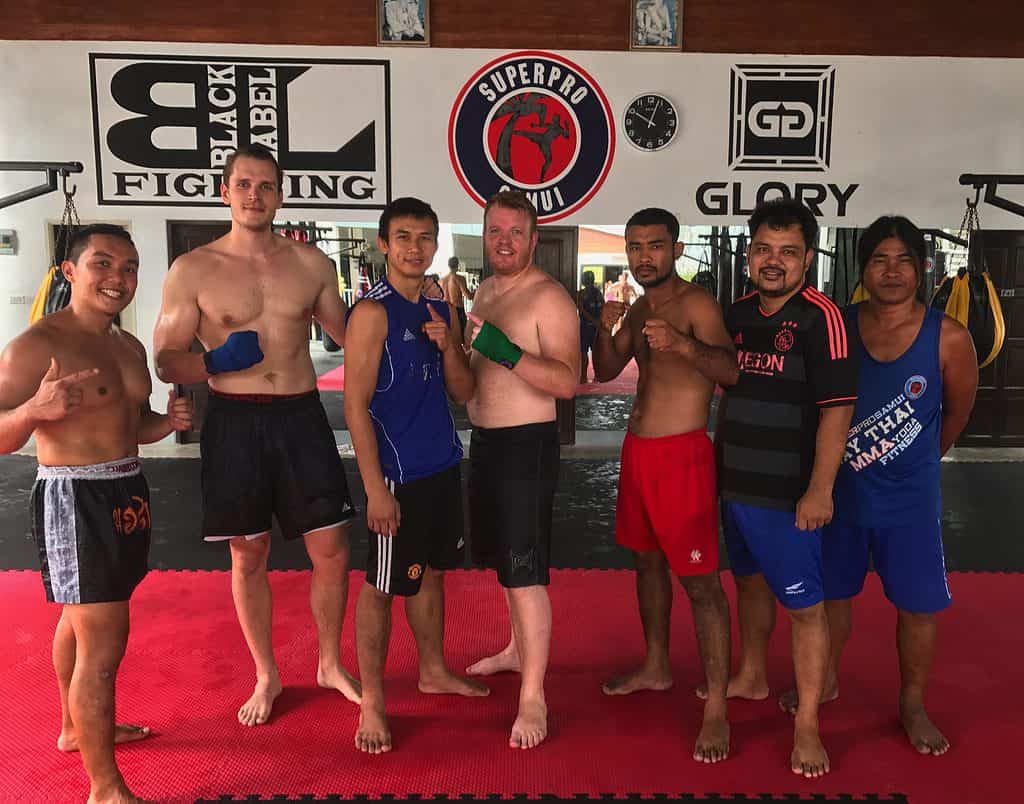
An Example of a Muay Thai Class in Thailand
While the exact schedule is different at each gym, they’re often alike.
A typical session is usually between 1,5 – 2 hours, and consists of one or more of the following:
- Running
- Skipping (and/or jumping tires)
- Dynamic stretching and shadowboxing
- Heavy (boxing) bag work
- Technique drills
- (Boxing) pad rounds with coaches
- Strength & conditioning exercises
- Static stretching
If you’re experienced or want to challenge yourself further, most gyms offer to spar as well. Whether I recommend sparring or not, we’ll get into it in a bit.
📌 TIP: Get a feel for the different boxing bags at the gym first. Find the hardness and weight of one that suits you. I once kicked a bag filled with wood shavings in a gym in Bali. Don’t tell me I didn’t warn you...
How To Choose the Perfect Boxing Gloves
You can borrow gloves for free at most gyms. But mark my words – not all gloves are equal. Especially not the ones shared – poor things…
When I bought my first boxing gloves at a gym in Thailand I picked the ones sold at the gym.

But the problem was not only that they were too small, but also that there was a lack of padding. As a beginner, I didn’t know that at the time.
Those two things combined resulted in an annoying knuckle pain after the first few weeks of training.
And if you’re in Thailand for a limited time, like most people are. Then you don’t want to risk your valuable time because of potential injuries.
📌 TIP: If you’re planning to train for more than 1 month consider buying a pair of gloves (and hand wraps).
1. The Best Brand for Boxing Gloves
I’ve tried most of the biggest brands.
So here’s my brief review of the 16 oz. size gloves from the most popular Thai brands, which I’ve all owned and trained within Thailand:
#1 Top King (my favorite)
Size: Large (16 oz)
Pros:
+ Padding
+ Weight distribution and feel
+ Wrist support
+ Durability
Cons:
None
#2 Twins
Size: Regular (16 oz)
Pros:
+ Padding
+ Weight distribution and feel
+ Wrist support
Cons:
– Durability
#3 Fairtex
Size: Small (16 oz)
Pros:
None
Cons:
– Padding
– Weight distribution and feel
– Wrist support
The reason I don’t mention price anywhere is that it doesn’t differ much from brand to brand. They usually go for around 2500 THB ($75 USD).
📌 TIP: As you see, they’re all 16 oz gloves, but in different sizes. The reason is that the size of the same weight can still vary a lot from brand to brand.

2. How To Find the Right Size of Boxing Gloves
The best thing to do is try different gloves from different brands. Especially if you have larger hands like I do (XL-XXL) since there will be less space for errors.
If you have the option, visit a store near your home that sells gloves from popular Thai brands. Like Top King, Twins, Fairtex, etc. And try the different brands out.
📌 TIP: Remember to wrap your hands first. You don’t try skiing boots barefoot either (I guess).
A Quick Size (Oz) Guide
| Weight | Size | Oz | Hand Circumference |
| Up to 100 lbs | Youth (Y) | 6-8 oz. | 5” – 6” |
| 101-105 lbs | Regular (S/M) | 10-12 oz. | 6” – 7½” |
| 151-175 lbs | Large (L/LX) | 14 oz. | 7¼” – 8½” |
| Over 175 lbs | Large (L/XL) | 16-18 oz. | 8¼” – 9¾” |
How to Save 50-70% On Your Muay Thai Gear
The trick is to buy your gear in Thailand.
Compared to the prices in many Western countries it’s 50-70% cheaper.
Most of the popular Muay Thai brands are (hand) made and exported from Thailand. Which also reduces the price.
If you’re having some time in Bangkok beforehand, then you’ll have everything you need there. But if you’re in a smaller city, that might mean fewer choices (even at popular destinations like Koh Samui).
In that case, I’d suggest you buy them at Lazada (the Amazon of Thailand) if you’ll have enough time to receive your goods.
But first of all, make sure to buy from a seller with good ratings.
📌 TIP: You could also ask your gym about delivering it to them before you arrive. And then make the order in a good time ahead. Just make sure communication is clear, so there are no misunderstandings with the gym once they receive the package.

Miscellaneous Gear
You can borrow these at most gyms (except one of them, I’ll let you guess which one).
1. Hand Wraps
There’s not much to say about them, since they’re all pretty equal. So pick your favorite color.
The coaches will help wrap up your hands. But if you want to look like a pro, I suggest you learn how to wrap them yourself (video).
2. Skipping Rope
If you’ve never done skipping before, or you’re a taller individual like me (6’4” / 194 cm).
Then you might find most ropes at the gyms in Thailand hard to use or too short. So I suggest bringing your own if you plan on training for more than a few weeks.
I prefer the basic ones with steel wire. They’re the easiest to maneuver and will give you a good workout. Here’s the best-selling skipping rope on Amazon.
3. Shin Pads
Though these can be nice they’re rarely a need to have.
From my experience, shin pads are only a necessity if you’re sparring. And if you intend to do so, chances are you’re already experienced enough to own a pair.
You can also borrow a set at most gyms. And unlike boxing gloves, a rough or low-quality pair of shin pads likely won’t bother you.
Besides sparring they can be nice to have for technical drills too since you can simulate kicks better by being less cautious. Or relieve shin soreness as a beginner.
📌 TIP: If you want to get some shin pads, make sure they’re light. The weight can be different between brands despite the sizes. Exactly like the gloves.

4. Flexible and Sweat-Friendly Sportswear
This is a must.
Imagine cracking your shorts open while helping your coach present a kick in front of everyone. No further explanation is needed…
And when you think about how much you’re usually sweating while training. Multiply this by 3-5 x (seriously).
That’s the result of training for +1,5 – 2 hours in the hot and humid weather of Thailand. I’ve even had Nike “Dri-Fit” sports shorts which couldn’t stand the test.
And it’s also good to wear something where you can tighten the waist.
You’re gonna jump a lot, or a foot can get stuck in your shorts during technical drills.
📌 TIP: If you’re a guy, have in mind that most guys train shirtless though, so the shirt isn’t that important. I like to only wear one during warmup.
If You’re Considering Sparring
Now to something I could write another post about, but I’ll cut right to the case.
Not long after I started training Muay Thai, I thought of having an amateur fight. And with that sparring is unavoidable.
After noticing that I started having recurring headaches after sparring. I asked Dr. Google for answers. And we all know how that usually goes…
After many hours of research, the conclusion was clear – repetitive hits to the head impose a risk of CTE. And no, it’s not only the knockouts. That’s a myth.
And don’t let the charismatic fighter on TV fool you. CTE isn’t always visible, and usually, symptoms first start to occur 10 years after the damage has happened.

CTE will not only affect your cognition, and memory, and make you a little “funny” kind of stupid.
It can affect your emotional state, relationships, etc. and that’s where I draw the line. It’s serious stuff.
But it makes sense if you’re punishing your CPU, there are consequences.
And believe me, I did anything I could to find studies that proved otherwise. My pattern of recognition during research was optimized in favor of Muay Thai.
It’s my biggest hobby and sparring is the most fun part of it.
After these findings, I decided to limit it a lot and increase my focus on other motivating aspects of training. Like practicing new techniques such as advanced kicks, etc.
And by limiting I usually mean not sparring more than every 3 months when I’m at home. And weekly when I’m temporarily visiting Thailand. This is what I find suitable thinking a lifetime ahead.
Many would argue that I’m way too cautious, and maybe they’re right. But in the end, it’s about the level of risk we consider right for us as unique individuals.
Next Chapter: How To Train Muay Thai in Thailand (And Stay for up to 1 Year)
Now that you’re familiar with the basics of training Muay Thai and more specifically in Thailand, let’s continue to the next chapter.
Here I share everything I know. Plus the things I wish I knew from the beginning. Chances are some of it will surprise you. Including:
- Why training in Thailand is different and what to expect
- How to find the right gym and important things to look out for
- Everything you need to prepare and consider before going
- How to stay in Thailand for more than 90 days (if you want)
- What it will cost you and tricks to save a lot of money
- And much more…


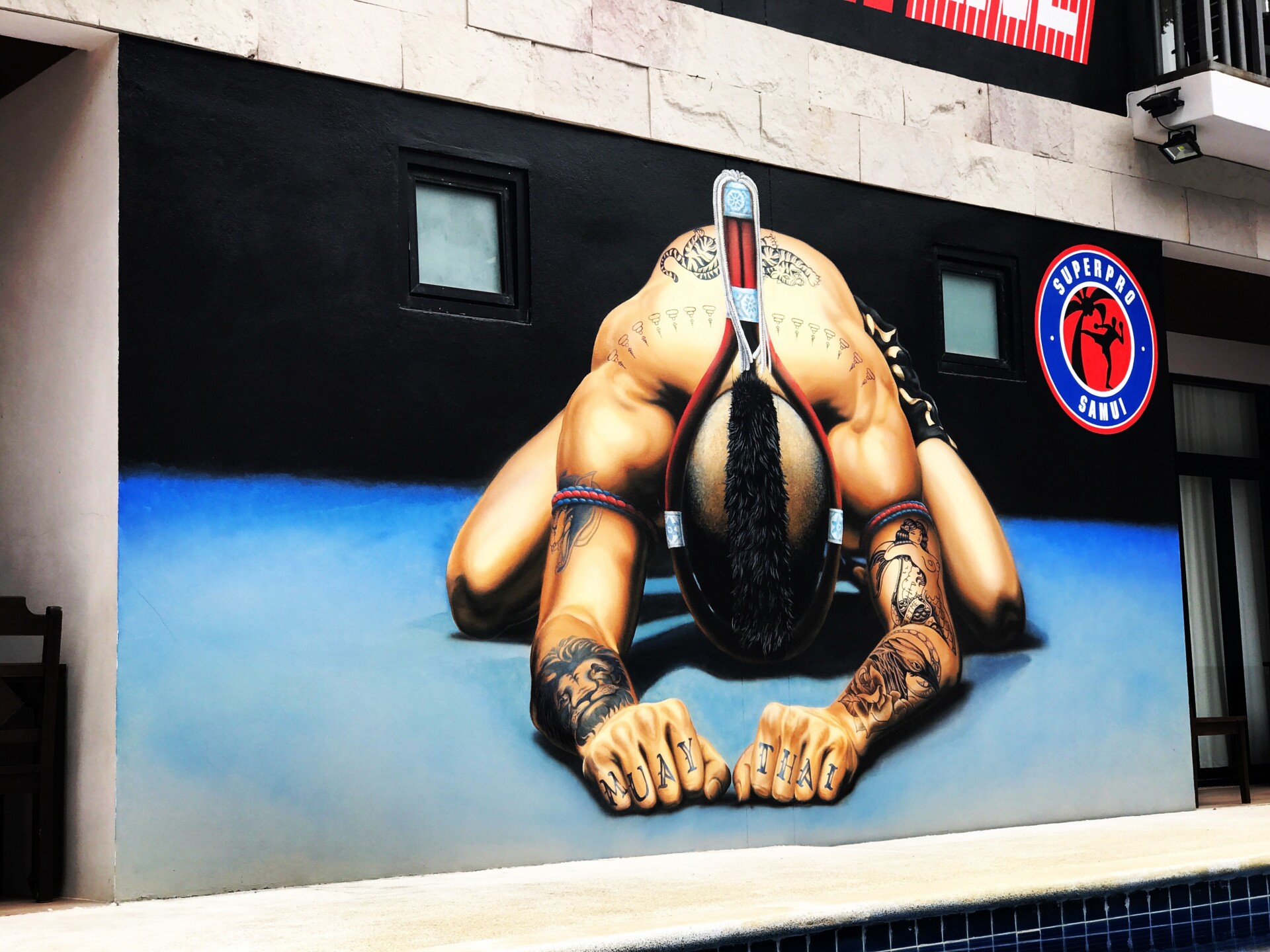
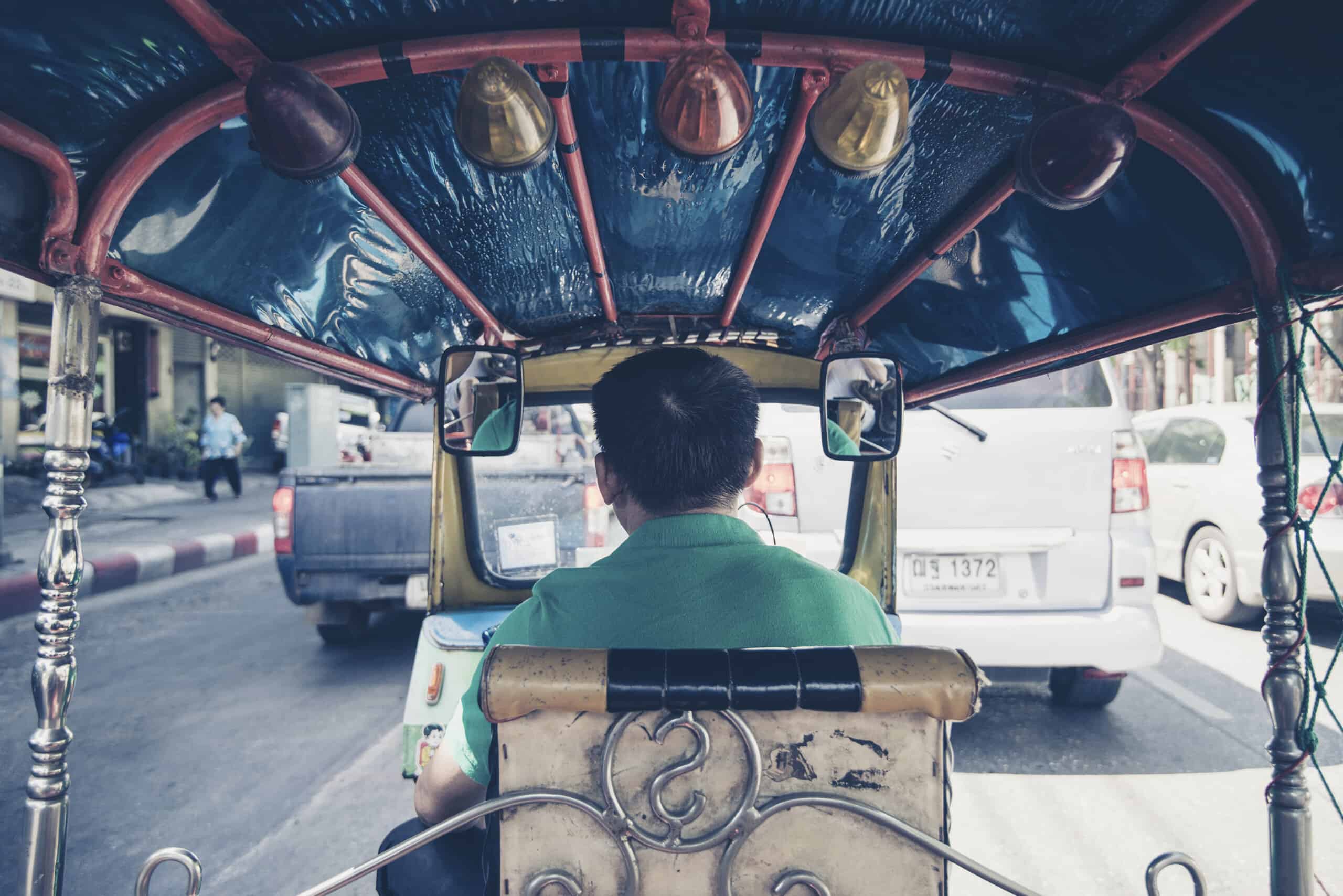
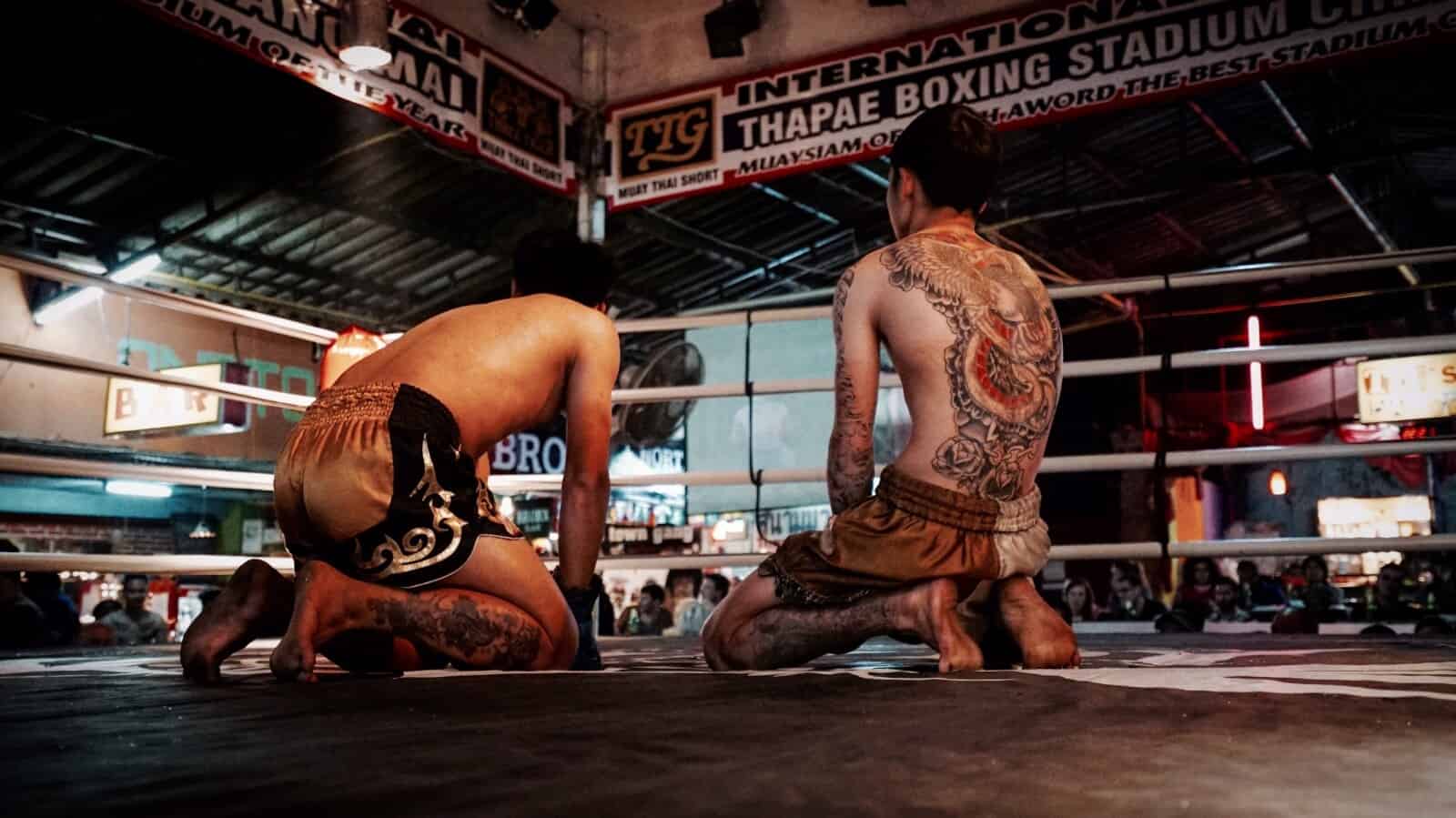
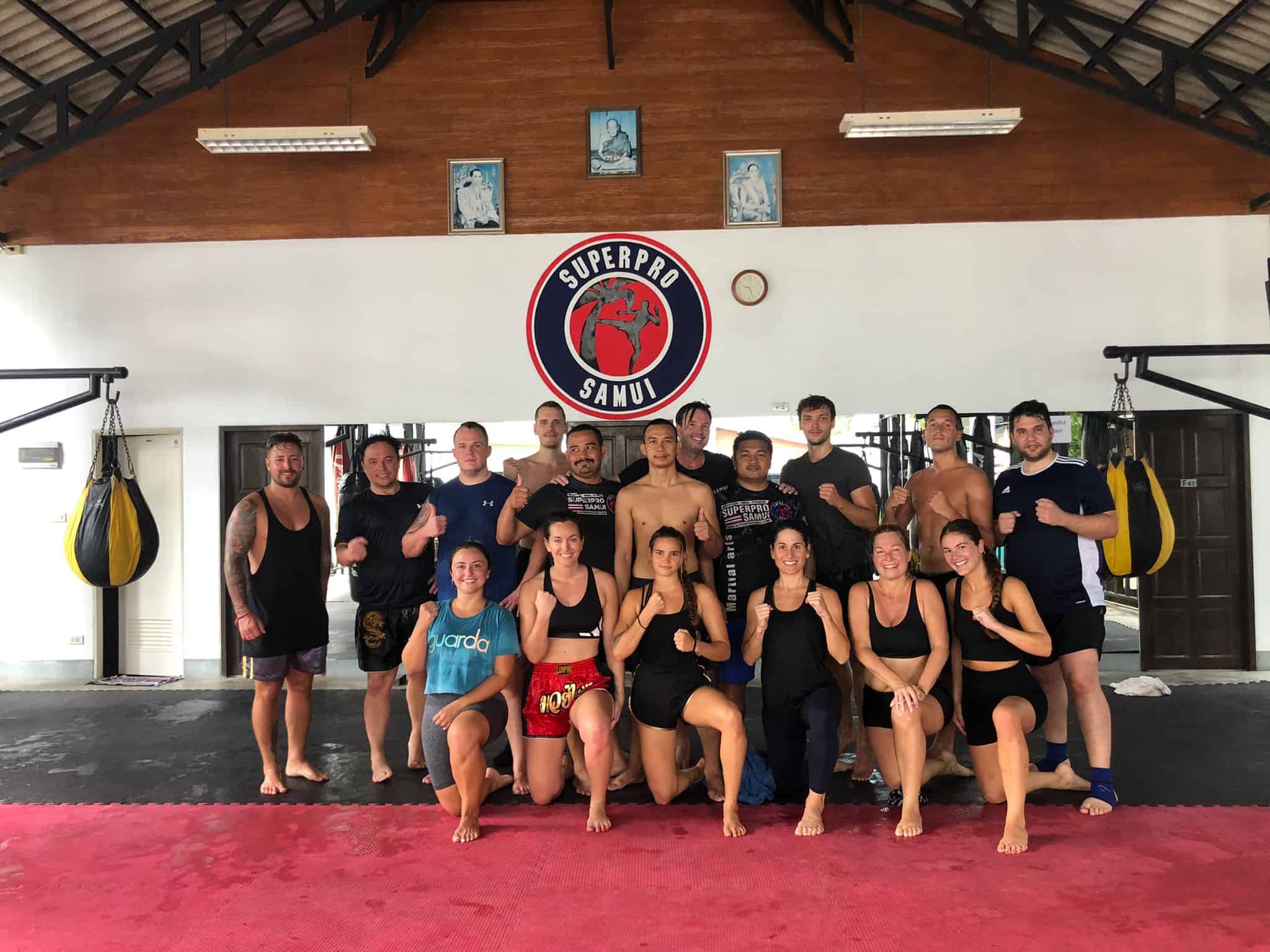
Leave a reply